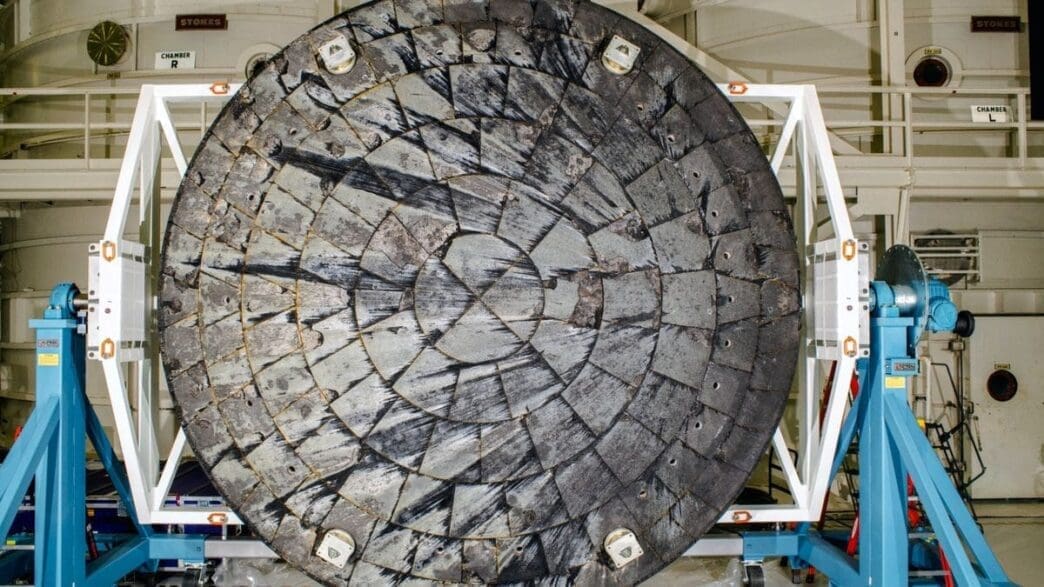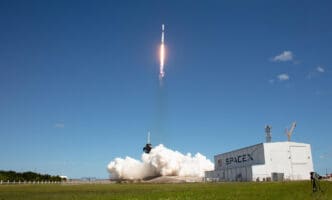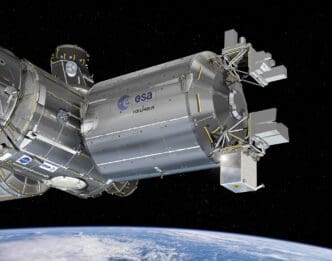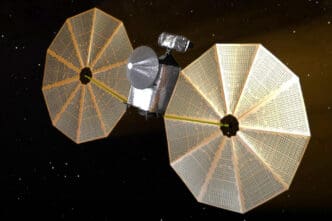Challenges with the heat shield of NASA’s Orion spacecraft during the Artemis 1 mission have led to delays in subsequent missions. These issues were revealed following the recovery of Orion, marking a crucial moment in NASA’s mission timeline.
Off the coast of Baja California in December 2022, the sight of NASA’s Orion capsule descending rapidly from space was both thrilling and concerning. As the capsule ended its 25-day mission around the moon, its recovery by the USS Portland crew exposed significant damage to its heat shield. The cracks spotted on Orion’s surface by the recovery team raised questions about the heat shield’s resilience, despite its design to endure high temperatures.
Orion’s reentry followed a sharply angled trajectory, descending at incredible speeds before parachutes slowed its fall. Yet, during the descent, temperatures exceeded 5,000 degrees Fahrenheit, challenging the materials used for the heat shield. Experts noted that though some damage to the shield is expected, the extent observed was unusual. Although the vehicle was uncrewed, NASA’s long-term goal is to ensure the safety of astronauts planned for future missions in 2027.
This reentry was characterized by a unique ‘skip’ maneuver, intended to manage speed and heat by bouncing off the atmosphere’s upper layers before final descent. While this maneuver reduced kinetic energy, it inadvertently led to increased stresses on the shield, resulting in severe surface damage.
The heat shield, vital to astronaut safety during reentry, faced critical issues. Made from a Novolac-based resin within a fiberglass framework, this shield material was also used during the Apollo missions. However, Orion’s shield behaved differently. Throughout the mission, gases produced during reentry became trapped, leading to substantial cracks when they expanded upon the second atmospheric entry.
Engineers determined that the mission team had misjudged the heat flow, causing the resin to expand and fracture. These unexpected conditions revealed shortcomings in the shield’s performance and prompted NASA to delay and redesign upcoming missions to prevent similar occurrences.
In response to the identified deficiencies, NASA announced adjustments to the reentry trajectory for the upcoming Artemis II mission, set for April 2026, to mitigate excess heat retention. Further, advances in manufacturing are expected to enhance the permeability of the heat shield for Artemis III in 2027, maintaining astronaut safety throughout the mission.
NASA’s ongoing efforts highlight the complex nature of space exploration and the importance of addressing technical challenges head-on. As the Artemis missions continue to evolve, ensuring the reliability and safety of the spacecraft remains paramount in the quest to send humans back to the moon.
Source: Space







